Choosing to move to Japan is a major life decision for anyone in the US.
Japan is an Asian country made up of thousands of islands, with its own religion, and everyone speaks Japanese primarily.
This is also the birthplace of sushi.
Living here is a complete life change for most Americans in all aspects of culture.
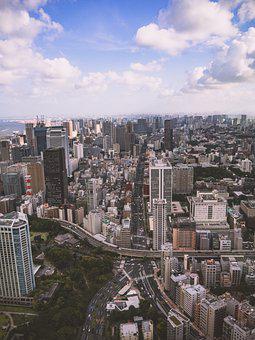
Contents
Pros of Living in Japan
1. Vending Machine Rows
Cream-filled cakes, pizza slices, hamburgers, ramen, and frozen steak… are some of the things you can buy when shopping from vending machines in Japan.
Row after row, vending machines are lined up like robotic food stalls–without a single person in the vending process.
The vending machine to people ratio is the equivalent of a kindergarten class of pupils–one vending machine for every 23 people.
It is the greatest number of outdoor vending machines that you will see in any country.
Finding something to eat is never an issue as long as you have the correct amount of currency.
You can also buy non-edible items like face masks, prayer cards, electronics, and toys from vending machines.
2. Fancy Toilets
Bidets, heated seats, and music boxes all fit inside the bathroom thrones, which they call a toire in Japan.
This gives a new perspective to the American meaning of a tour of duty!
The toilets here are so popular.
There are even restaurants in Japan that are completely toilet themed.
You actually eat out of a miniature commode.
Talk about gross, but if you are into that kind of humor, you will get along fine!
Most people are into the fancier toilet options, at least enough to appreciate the theme in restaurants.
3. Highly Urbanized
According to The World Bank, the urban population of Japan is 92 percent as of 2020.
This has been the same since 1990 with a peak of 91 percent urbanization.
Prior to this, in 1960, the island country was only 63 percent urbanized, with an increase in 1975 to 76 percent.
If you like living in rural towns, forget about that in Japan.
4. Robots are Cool
Robots in Japan are very popular.
This is one of the only places where your waitress and butler may actually be a robot!
You are going to get to talk to robots and use them like humans when living in Japan.
This robot age has generated social robots, animal bots, and androids, as well as humanoid entertainment robots.
For professionals working in robotics, you will find plenty of work opportunities in Japan–and among the latest and most advanced in the industry.
5. High GDP for Economy
Japan has the world’s second-highest gross domestic product (GDP) index, second to China.
The Japanese GDP is $4.7 trillion USD which equates to a lot of money being made and spent in the country.
Here you have a highly developed society with a free market economy.
You will be able to work and get rich if you have the right talents and luck in Japan.
6. Anime and Manga
Anime is a form of comic and graphic novel that comes from Japanese culture.
The publications are in print and digital form and have been transferred into other media, like movies and video games.
Some anime are also translated into American English for the US audience.
Manga is another form of comic book that includes animated cartoons made in Japan.
Most people not living in Japan commonly confuse these art forms.
However, both anime and manga are distinctly Japanese in origin.
By the way, Demon Slayer is the most popular Japanese anime, and One Piece is the most popular manga in history.
7. Biodiversity of Nine Types of Forests
Even though Japan is an island, there are more forests here than sandy beaches.
You can visit northern Japan and the Southern Kurils, where cool temperate forests are located.
On the northern island of Hokkaido, where snow dominates in the winter, coniferous spruce and fir dot the alpine region.
If you love forests and trees, you will have a lot to experience hiking and bird watching the outdoors of Japan.
8. Nearly 7,000 Islands are Populated
When you live in Japan, you are living on one of the 6,852 islands that make up the country.
There is hardly time to see all of these islands, especially as a visitor.
But if you live in Japan, you are in the prime place to learn about the history and geography of these many islands in the most natural way.
Within the 47 prefectures, regions to visit include Hokkaido, Tohoku, Kanto, Chubu, Kansai, Chugoku, Shikoku, and Kyushu.
Furthermore, Japan had a population of 125.71 million in 2020.
The country is ranked 11th worldwide for population size and this equates to a population density of 340.8 people every square kilometer.
Prepare to be shoulder to shoulder with people in the streets, especially if you move to Tokyo.
Cons of Living in Japan
1. It’s Expensive to Live on an Island
Whatever the island, the cost of living automatically increases when you are cut off from the mainland.
However, Japan is also one of the wealthiest countries on the globe with the second highest GDP.
That is why you are expected to either have a tech job in robotics or be rich before moving to Japan, all the way from the US.
Some sources state Japan costs three times the price of the US.
Yet, the actual cost of living is 10 percent lower in Japan compared to the US.
Either way, you need 150,000 yen ($1,100 USD) a month to survive with hotels in Tokyo costing 90,000 yen ($660 USD) on average.
2. Lots of Snow in the Winter
The snow monkeys of Japan are some of the most iconic animals captured on video.
It is surreal to see these red-faced monkeys soaking in hot springs surrounded by snowfall and fog.
And so magical!
Those who want to see snow should not live in Kyoto or Japan where it barely snows at all.
Instead, move to Hokkaido where it easily snows 15 feet and sometimes every day.
There is the Sapporo Snow Festival to at least appreciate–and its famous beer brewers brew using those icy cold mountain waters.
Samurai warriors are some of the strictest and most intimidating social classes in history.
And these are from Japan, where you can still find feudalism as a social hierarchy.
The caste system ranks people according to family heritage and job title.
You have an emperor at the top of a pyramid followed by a shogun, daimyo, and samurai.
From here, ronins, peasants, artisans, and merchants make up the social system.
If you move to Japan, you will be expected to understand this social hierarchy and make it work for your household and social status.
4. They Speak Japanese
If you do not know the language or how to read Japanese characters called kanji, then you are going to be in culture shock.
English is not the predominant language of the nation of Japan.
Neither are those Latin letters we are so fond of, which means you will need to understand basic Japanese speech, as well as how to read kanji characters on signs and paperwork.
You also need to understand how to greet people properly in Japan and other formalities.
5. Ring of Fire
Japan is located along the Ring of Fire.
This is an area in the Pacific with volcanoes and earthquakes caused by tectonic plate shifts.
When the plates shift, earthquakes break open the earth and the jolting of the earth disrupts volcanoes that, when active, will erupt with lava.
In fact, Encyclopaedia Britannica states “approximately 75 percent of the world’s volcanoes occur within the Ring of Fire.”
6. Constitutional Monarchy and Unitary State
The US is a democratic state and operates with a head of state called the President of the United States.
In Japan, there is a constitutional monarchy that incorporates a monarchy involving a queen and king with the political state.
The sitting emperor or king of Japan is Crown Prince Naruhito.
He is wed to Empress Masako.
From the US perspective, living under the rule of a monarchy, even one that is constitutional can feel stifling.
You also have to learn a whole new set of rules regarding government and politics.
7. The Island of Cats
Aoshima is one of several islands where cats are the primary residents.
If you are allergic to kitties, then avoid Aoshima or Cat Island located in the Ehime Prefecture.
Also called Tashirojima, the Japanese Cat Island is rural.
There are fewer than 15 people in fishing villas, as well as furry felines.
The shrines dedicated to cats encourage the behavior of cats living wild and free here.
Tourists also play a major role in keeping the cat population up, mainly by feeding the animals.
8. High Rate of Suicide
Japan has one of the highest rates of suicide on the planet.
The World Health Organization reports that the rate of female suicides is 18th highest worldwide, coupled with Japan being 21st in suffering from the most male suicides.
This is due to cultural factors and the belief in group harmony over individual rights.
Suicide is considered virtuous and a form of social order.
For other cultures, this belief system is alarming and can be difficult to understand.
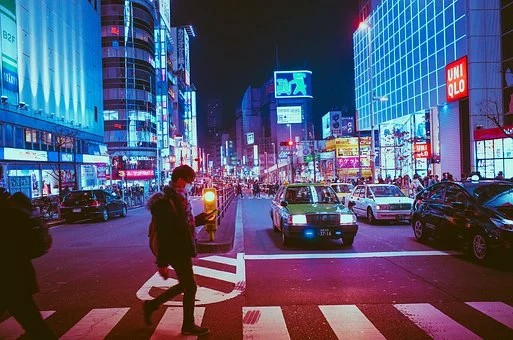
Pros and Cons of Living in Japan – Summary Table
| Pros of Living in Japan | Cons of Living in Japan |
|---|---|
| 1. Vending Machine Rows | 1. It’s Expensive to Live on an Island |
| 2. Fancy Toilets | 2. Lots of Snow in the Winter |
| 3. Highly Urbanized | 3. Strict Social Code |
| 4. Robots are Cool | 4. They Speak Japanese |
| 5. High GDP for Economy | 5. Ring of Fire |
| 6. Anime and Manga | 6. Constitutional Monarchy and Unitary State |
| 7. Biodiversity of Nine Types of Forests | 7. The Island of Cats |
| 8. Nearly 7,000 Islands are Populated | 8. High Rate of Suicide |
Japan Safety Overview
READ THE FULL REPORT: Japan Safety Review
Safety Index: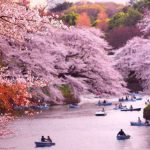
- OVERALL RISK: LOW
- TRANSPORT & TAXIS RISK: LOW
- PICKPOCKETS RISK: LOW
- NATURAL DISASTERS RISK: LOW
- MUGGING RISK: MEDIUM
- TERRORISM RISK: MEDIUM
- SCAMS RISK: LOW
- WOMEN TRAVELERS RISK: LOW
Frequently Asked Questions
What is the largest city in Japan?
The largest city in Japan is Tokyo with 9.2 million people.
Tokyo is in the prefecture also named Tokyo, making the proper name Tokyo, Tokyo.
What is the biggest religion in Japan?
While most outsiders consider Asian countries to follow Buddhism, the country of Japan provides residents with the freedom to worship any religion.
The most popular religion in Japan is Shinto, which is an East Asian religion, and nearly everyone, 96 percent of the population, believes in this belief system.
Meanwhile, Buddhism, Taoism, and Confucianism are also popular.
Christianity, which is the biggest religion in the US, makes up the least proportion of the population at 1 percent.
How far is Japan from major US cities?
This is a 4,812-mile trip from Seattle to Japan, which is the closest US city.
It is 5,520 miles from Japan to Los Angeles and 6,738 miles from Japan to New York.
What is the Japanese currency?
The yen is the currency used in Japan.
Is Japan on an island or a peninsula?
The country of Japan is on islands, nearly 7,000 of them, but there are several peninsulas in Japan.
This includes Noto, Kii, Boso, Miura peninsulas, and many more.
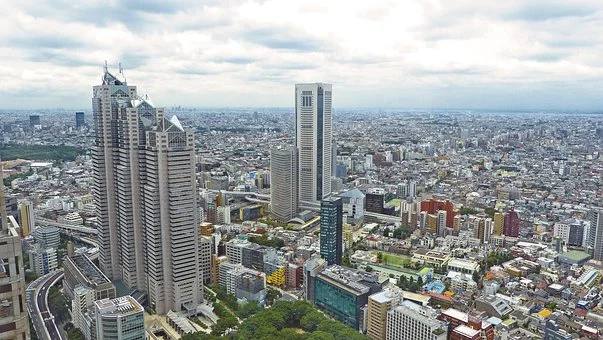

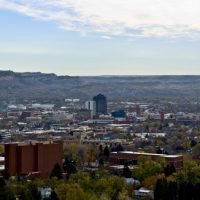









I am from Japan and was curious about our country’s position abroad, so I came across this article. The information is generally correct, but I would like to point out some facts that are not accurate. Japan is a collectivist country with strong stereotypes and social pressures, but it does not have a class-based social structure like in the West. There is no status system in Japan, although there are in fact certain “classes” by income, and recent years the widening gap between the two has become a social problem(the most recent relative poverty rate in Japan was 15.4%). In the past, statues was determined by occupation or family origin, such as “samurai” or “farmer”, but those practices were completely eliminated with the 1947 revision of the Family Registration Law.
In addition to the difficulty of learning the language, the other major hurdles to emigrating to Japan are the poor working environment and discrimination against women, as well as the high cost of school fees. The Japanese employment system is very unique, with a system of lump-sum hiring of graduates from educational institutions at the end of the school year, lifetime emplayment, and seniority-based wages deeply entrenched in companies. While these practices have their advantages,they also present many challenges, such as difficulty charging jobs and low productivity. There are also a number of perculiar systems, such as mandatory overtime work and haif-mandated participation in “drinking parties” held after working hours, which are not easy for non-Japanese to get used to. It is also difficult to take paid leave, perhaps because of the deeply rooted belief that “taking time off will cause trouble for the employer.
One way to live in Japan without working is to study abroad, but tuition fees are extremely high because the government’s education budget is small and school institutions musy rely on tuition revenue from students.(Note that Japanese university are four-year programs, but it costs at least 16$ to graduate,and private universities require at least $37 for some faculties.)
THANK YOU! I was reading it and it didn’t seem like the information was from a reliable source